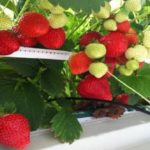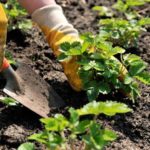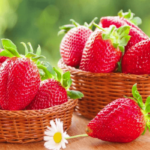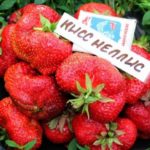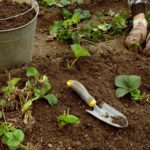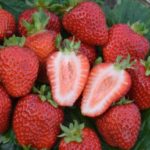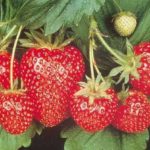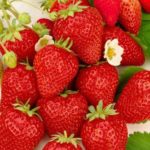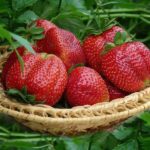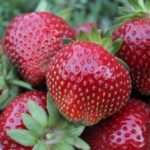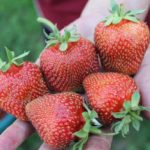When choosing varieties of garden strawberries to grow in their garden plots, gardeners pay attention to several important factors that strawberries must meet. This is, first of all, the yield and taste of the fruit, as well as the undemanding nature of agrotechnical care. All these characteristics correspond to the new development of Dutch breeders - strawberries called Vivaldi.
Description of the variety
Garden strawberries of the Vivaldi variety were bred by Dutch breeders and belong to the high-yielding varieties of medium ripening. For full development, the bushes do not require complex agrotechnical care, which is why Vivaldi is popular both among farmers who grow berries for sale and among ordinary summer residents. In addition, the variety does not require pollination, as it is self-fertile and can be successfully cultivated both in open ground and in greenhouses. In heated structures, fruits are harvested almost before the first frost.
Despite the fact that the variety appeared on the beds of domestic gardeners relatively recently (in 2015), it has managed to gain popularity due to its advantages. Powerful bushes form large berries with a sweet taste and a pronounced strawberry aroma.
a brief description of
Dutch breeders in the description of the variety indicated the following characteristics of garden strawberries:
- The bushes are branched (which must be taken into account when planting), erect and quite powerful. The flower stalks that form on them are below the level of the leaves, so the berries are hidden from the scorching rays of the sun, and thanks to this feature, the fruits are rarely damaged by feathered pests.
- Quite a lot of mustaches form on strawberries every year, so the process will have to be controlled so that they do not braid all the rows.
- The berries have an attractive heart shape and have an average weight of 35 grams. By the time they are fully ripe, they acquire a rich dark red hue. The fruit pulp is juicy and moderately dense, the berries have good transportability, so the variety is often grown for sale on the market.
- On fertile soils and subject to proper care, about 1 kg of berries are harvested from one garden strawberry bush, with the peak yield occurring in the 2-3rd year of cultivation, then rejuvenation will be required.
Those gardeners who have already tested the Dutch variety on their plots have identified several advantages of strawberries:
- rich sweet taste and pleasant strawberry aroma;
- self-fertility and high productivity;
- attractive appearance of berries and good transportability;
- drought resistance and winter hardiness;
- strong immunity to most crop diseases and the ability to reproduce independently using mustaches without losing the characteristics of the variety.
Dutch strawberries also have disadvantages, but they are minor:
- the declared yield is manifested exclusively on fertile soils or subject to constant fertilizing;
- powerful and spreading bushes take up a lot of space in the garden;
- the need for permanent mustache removal.
Features of cultivation and care
Even a novice gardener can cope with planting and caring for Vivaldi bushes; the main thing is to follow all the recommendations of the variety’s developers in a timely manner.
Landing
To plant garden strawberries, select a sunny, open area with fertile soil. In the shade, the berries will also form, but will be small and sour. As for the timing of planting, it can be either the spring months, after the soil has warmed up sufficiently, or the end of summer, the beginning of autumn, so that before the onset of the first cold weather the bushes have time to fully take root in the new place.
Vivaldi strawberry planting algorithm:
- Make shallow holes at a distance of 60 cm from each other, and maintain the same distance between the rows.
- Place the bushes in holes, carefully straighten the roots, and cover them with fertile soil.
- Water the plants and mulch the rows to retain moisture in the soil longer.
Loosening, weed control
If mulch is laid around the garden strawberry bushes, this saves time on weeding and loosening the soil. Otherwise, the procedure is carried out after each irrigation or rain, so that the soil does not turn into a crust, through which air cannot flow to the root system. Weeds also need to be removed on time, otherwise they will choke the strawberries.
Removing a mustache
The mustache is carefully trimmed from those bushes that are not planned to be used as mother plants for propagation. Be sure to do this with a sharp knife or pruning shears so as not to damage the plant.
Top dressing
Fertilizer application is the main activity that is carried out to obtain a high yield. In spring, strawberries require compounds with a high nitrogen content; phosphorus and potassium fertilizers are used during flowering and fruiting. Garden strawberries respond well to feeding with mullein or bird droppings diluted in water.
Pest and disease control
The Vivaldi variety has good immunity to diseases and pests, but prevention will not hurt.The set of measures includes timely removal of plant waste from the site, planting marigolds in the immediate vicinity and sprinkling tobacco dust between the rows.
Wintering
Due to its high frost resistance, the Vivaldi variety needs shelter only in the northern regions. To do this, use dry foliage, spruce spruce branches or agrotextiles.
Subtleties of reproduction
The strawberry variety produces a sufficient number of whiskers, which are used for propagation. In this case, it is recommended to cut off all flower stalks so that the nutrients reach the vegetative organs.
Harvesting and storage
Berry picking begins in mid- or late July (depending on the region). Store the fruits in the refrigerator in enamel or plastic containers for no longer than 5 days. If there is a lot of harvest, jams or compotes are made from it, and also frozen fresh.


